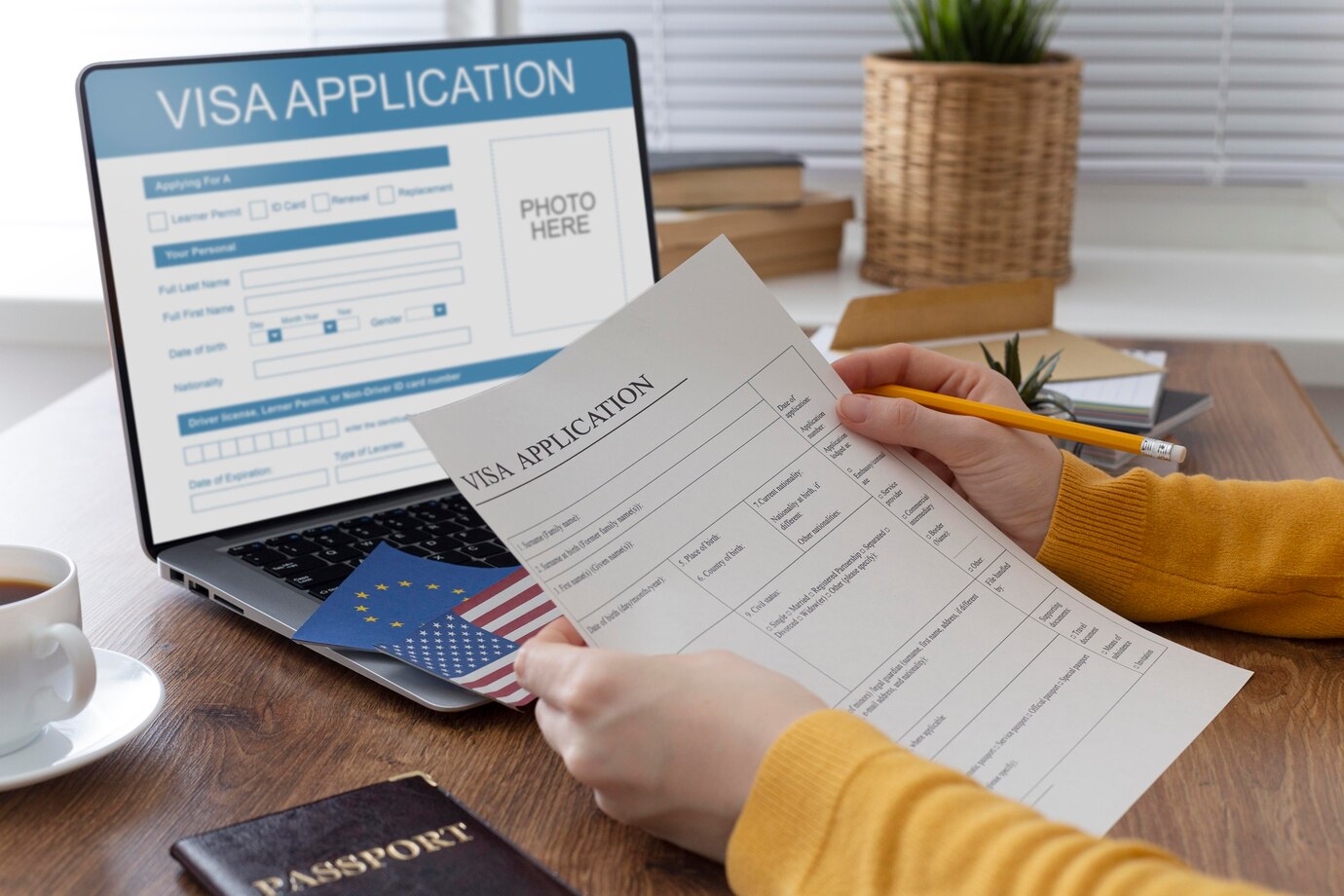The passport: a tiny booklet holding immense power. It’s your key to unlocking foreign adventures, bridging cultural divides, and venturing beyond familiar horizons. But before you set foot on that international flight, there’s one crucial hurdle: the passport photo. This seemingly simple snapshot, nestled within the pages of your travel companion, is scrutinized by border officials worldwide, and failing to meet their exacting standards can send your globetrotting dreams crashing down. Fear not, intrepid traveler! This comprehensive guide will navigate you through the labyrinthine world of passport photo regulations, ensuring your visage meets the criteria of every immigration desk you encounter. From lighting and background nuances to facial expressions and acceptable attire, we’ll unveil the secrets to capturing a photo that grants you seamless passage into the vast tapestry of the world.
Understanding the Requirements for a Passport Photo
Before delving into the process of capturing the perfect passport photo, it is imperative to have a comprehensive understanding of the specific requirements mandated by the passport issuing authorities. Each country may have distinct standards for passport photos, and it is crucial to familiarize yourself with these guidelines to ensure your photos are accepted without any complications.
Typically, these requirements encompass several key elements. First and foremost, the background of the passport photo is often required to be white or of a light-colored shade. This background choice aims to provide a clear and unobstructed view of the subject’s face, emphasizing facial features for identification purposes.
Moreover, specific dimensions are a critical aspect of passport photo standards. Most countries adhere to a standardized size, with the common measurement being 2 inches by 2 inches. Within this confined space, the subject’s face must occupy a specified percentage of the frame, ensuring that facial features are easily discernible.
Understanding the specific guidelines for your country or the country you are obtaining a passport for is paramount. Additionally, be aware of any additional regulations, such as restrictions on headwear or guidelines regarding facial expressions. This foundational knowledge sets the stage for a successful passport photo shoot that aligns with international standards.
Preparing for the Photo Shoot
Once armed with a thorough understanding of the stringent requirements for passport photos, the next step involves meticulous preparation for the photo shoot. Beyond the technical specifications, this stage considers practical elements that contribute to the overall quality and compliance of the images.
Selecting an appropriate location is fundamental to a successful passport photo session. Opt for a space that offers ample natural light to ensure a well-lit and shadow-free outcome. Natural light is advantageous as it minimizes harsh shadows and provides a more accurate representation of facial features.
Equally crucial is the choice of background. Most passport standards dictate a plain, white, or lightly colored backdrop. This requirement emphasizes the subject and eliminates distractions, ensuring the primary focus is on the facial features. It is advisable to conduct the photo shoot against a neutral wall or background to meet these specifications.
Considering dress code is another aspect often overlooked. Passport issuing authorities may have specific guidelines regarding attire. Ensure that your clothing adheres to these guidelines, avoiding patterns or colors that may interfere with the photo’s overall clarity.
Lastly, it’s important to take into account any additional requirements or restrictions, such as guidelines on headwear. Some countries may have specific rules regarding religious head coverings, and understanding these nuances ensures that your photos are not only technically correct but also culturally sensitive.
In essence, preparing for the photo shoot involves a holistic approach, addressing both technical and practical considerations. By choosing the right location, background, attire, and being aware of additional guidelines, you set the stage for a photo session that aligns seamlessly with international passport standards.
Organizing the Photo Shoot
With a comprehensive understanding of passport photo requirements and careful preparation, the next critical step is the organization of the actual photo shoot. This phase involves orchestrating the various elements to ensure a smooth and effective session.
- Location and Lighting: Begin by setting up the photo shoot in a well-lit area with ample natural light. Avoid harsh shadows by positioning the subject in a way that utilizes the available light effectively. This might involve choosing a time of day when natural light is abundant or arranging artificial lighting sources strategically.
- Camera Setup: While professional photography equipment is not necessary, using a camera with a high resolution and clarity is essential. Ensure the camera is set to capture high-quality images that meet the specified dimensions and resolution requirements. Pay attention to the framing to ensure the subject’s face is centered and well-captured.
- Subject Positioning: Direct the subject to face the camera directly, maintaining a neutral and natural expression. It’s crucial to ensure that the entire face is visible without any obstructions. This may involve removing accessories such as hats, sunglasses, or anything else that could hinder a clear view of the face.
- Assistance: If possible, enlist the help of a friend or family member to assist with taking the photo. Having an extra set of hands can be valuable in ensuring the camera is at eye level and capturing the best possible shot. This assistant can also provide feedback on the subject’s pose and expression.
- Multiple Shots: Given the importance of obtaining a flawless passport photo, take multiple shots to increase the chances of capturing the perfect image. This approach allows for a selection process later on, ensuring that the final photo meets all necessary criteria.
By organizing the photo shoot with attention to location, lighting, camera setup, subject positioning, and the assistance of another person, you enhance the likelihood of obtaining a passport photo that aligns seamlessly with world standards.
Capturing the Perfect Shot
Having organized the photo shoot, the next crucial step is capturing the perfect shot. This phase requires attention to detail, precision, and adherence to the established guidelines to ensure the resulting photo meets the stringent requirements for a passport.
- Facial Expression and Pose: Passport photos require a neutral and natural facial expression. Avoid excessive smiling or frowning, as the goal is to represent a clear and recognizable image. Ensure that the subject’s face is directly facing the camera and that the eyes are open and visible. Strive for a relaxed and unforced pose to present an accurate representation.
- Frame Composition: Pay close attention to the framing of the shot. The subject’s face should be centered within the frame, with enough space around the head to meet specific dimension requirements. Avoid excessive cropping or zooming, as this can compromise the overall quality and compliance of the photo.
- Multiple Shots: Capture multiple shots in succession to provide a range of options for selection. This approach allows for the identification of the most suitable photo that aligns with all necessary criteria. Review the images immediately to identify any potential issues and address them promptly.
| Aspect | Guidelines | Additional Tips |
| Facial Expression | Neutral and natural, no excessive smiling | Avoid heavy makeup and ensure a clean appearance |
| Pose | Directly facing the camera, eyes open and visible | Remove accessories such as earrings and headwear |
| Head Position | Centered within the frame | Maintain a straight posture |
| Background | Plain white or light-colored, no distractions | Steer clear of patterns or textures in clothing |
Editing and Printing
Upon successfully capturing a series of shots that adhere to the established guidelines, the final step involves meticulous editing and printing of the passport photos. This phase is critical, as it ensures the images align with international standards and meet the specific requirements set by the passport issuing authority.
Begin the editing process by using photo editing software to refine the captured images. Crop the photos to the exact dimensions stipulated by the guidelines, ensuring that the subject’s face is appropriately centered within the frame. Adjust brightness, contrast, and color saturation as needed to achieve a clear and well-defined image.
While editing, pay special attention to the background to ensure it remains uniform and free of any distractions. Eliminate any shadows or imperfections that may detract from the overall quality of the photo. The goal is to present a polished and professional image that accurately represents the subject.
After completing the editing process, proceed to print the passport photos on high-quality photo paper. Many online and local photo studios offer printing services specifically tailored to meet passport standards. It is crucial to use the correct paper size and ensure that the resolution meets the specified requirements. This attention to detail during the printing process contributes to the production of crisp, clear, and compliant passport photos.
In some cases, passport photo services may be available at post offices or specialized photography studios. These services often guarantee adherence to international standards and can be a convenient option if you prefer professional assistance in printing your passport photos.
By dedicating careful attention to the editing and printing phases, you ensure that your passport photos not only meet the technical specifications but also present a high-quality and visually appealing representation. This commitment to precision will contribute to a seamless passport application process and facilitate hassle-free international travel.




